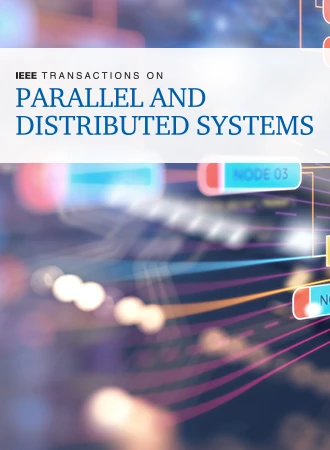IceFrog: A Layer-Elastic Scheduling System for Deep Learning Training in GPU Clusters
IF 5.6
2区 计算机科学
Q1 COMPUTER SCIENCE, THEORY & METHODS
IEEE Transactions on Parallel and Distributed Systems
Pub Date : 2025-03-20
DOI:10.1109/TPDS.2025.3553137
引用次数: 0
Abstract
The high resource demand of deep learning training (DLT) workloads necessitates the design of efficient schedulers. While most existing schedulers expedite DLT workloads by considering GPU sharing and elastic training, they neglect基于GPU集群的深度学习训练分层弹性调度系统
深度学习训练(DLT)工作负载对资源的高需求要求设计高效的调度程序。虽然大多数现有调度器通过考虑GPU共享和弹性训练来加快DLT工作负载,但它们忽略了层弹性,这会动态冻结网络的某些层。该技术已被证明可以显著提高单个工作负载的速度。在本文中,我们探讨了如何将层弹性纳入DLT调度器设计中,以实现更高的集群范围效率。阻碍层弹性在GPU集群中应用的一个关键因素是模型准确性的潜在损失,使得用户不愿意为他们的工作负载启用层弹性。必须有一个有效的层-弹性系统,能够很好地平衡层弹性训练的精度和速度。我们介绍了IceFrog,这是第一个利用层弹性来提高GPU集群中DLT工作负载效率的调度系统。它通过优越的算法设计和智能资源管理来实现这一目标。特别地,(1)我们建立了冻结惩罚和层感知吞吐量模型,以衡量层弹性工作负载的有效进度指标。(2)设计了一种新的调度器,进一步提高了层弹性的效率。我们在一个有48个gpu的物理集群中实现和部署IceFrog。广泛的评估和大规模模拟表明,与最先进的DL调度器相比,IceFrog平均完成作业时间缩短了36-48%。
本文章由计算机程序翻译,如有差异,请以英文原文为准。
求助全文
约1分钟内获得全文
求助全文
来源期刊

IEEE Transactions on Parallel and Distributed Systems
工程技术-工程:电子与电气
CiteScore
11.00
自引率
9.40%
发文量
281
审稿时长
5.6 months
期刊介绍:
IEEE Transactions on Parallel and Distributed Systems (TPDS) is published monthly. It publishes a range of papers, comments on previously published papers, and survey articles that deal with the parallel and distributed systems research areas of current importance to our readers. Particular areas of interest include, but are not limited to:
a) Parallel and distributed algorithms, focusing on topics such as: models of computation; numerical, combinatorial, and data-intensive parallel algorithms, scalability of algorithms and data structures for parallel and distributed systems, communication and synchronization protocols, network algorithms, scheduling, and load balancing.
b) Applications of parallel and distributed computing, including computational and data-enabled science and engineering, big data applications, parallel crowd sourcing, large-scale social network analysis, management of big data, cloud and grid computing, scientific and biomedical applications, mobile computing, and cyber-physical systems.
c) Parallel and distributed architectures, including architectures for instruction-level and thread-level parallelism; design, analysis, implementation, fault resilience and performance measurements of multiple-processor systems; multicore processors, heterogeneous many-core systems; petascale and exascale systems designs; novel big data architectures; special purpose architectures, including graphics processors, signal processors, network processors, media accelerators, and other special purpose processors and accelerators; impact of technology on architecture; network and interconnect architectures; parallel I/O and storage systems; architecture of the memory hierarchy; power-efficient and green computing architectures; dependable architectures; and performance modeling and evaluation.
d) Parallel and distributed software, including parallel and multicore programming languages and compilers, runtime systems, operating systems, Internet computing and web services, resource management including green computing, middleware for grids, clouds, and data centers, libraries, performance modeling and evaluation, parallel programming paradigms, and programming environments and tools.
 求助内容:
求助内容: 应助结果提醒方式:
应助结果提醒方式:


